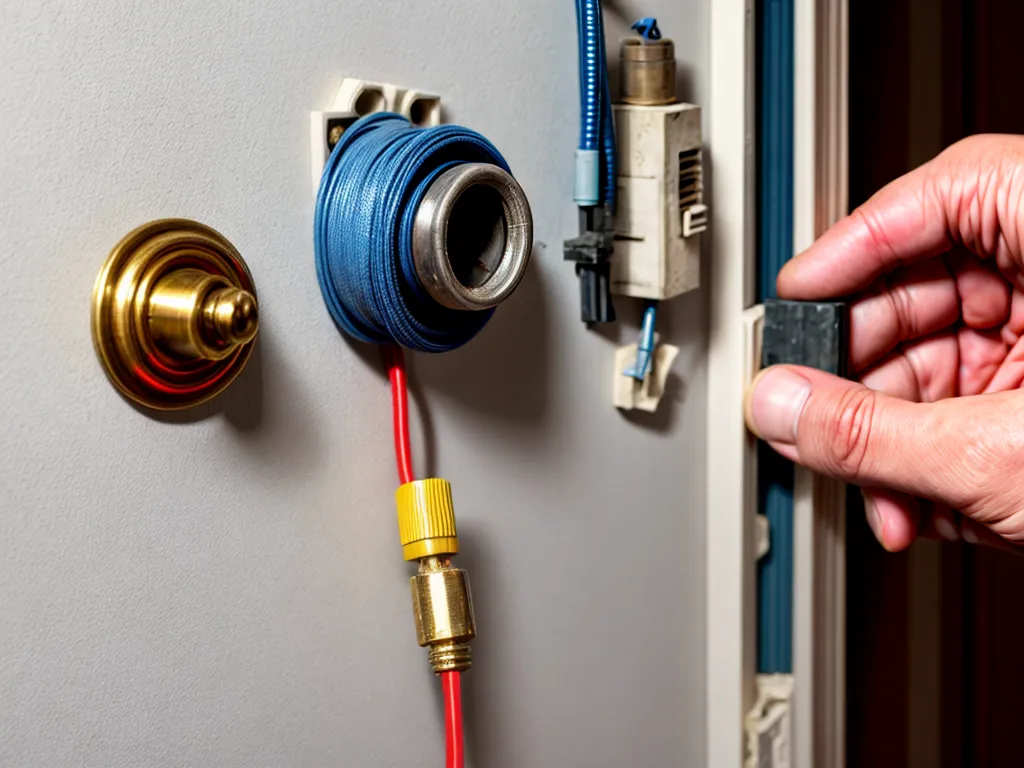
I recently purchased a home built in the 1920s that still had the original knob-and-tube wiring. This antiquated wiring can be a fire hazard, so I wanted to fully understand the risks and troubleshoot any issues. Here's what I learned about identifying and safely handling knob-and-tube wiring in my home.
What is Knob-and-Tube Wiring?
Knob-and-tube (K&T) wiring was commonly installed in homes built before the 1940s. It consists of individual rubber- and cloth-insulated wires that are supported along their length by ceramic knobs and tubes.
The insulation on old K&T wiring becomes brittle and cracks over time, exposing the conductors. This can allow wires to arc and overheat, increasing fire risk. K&T wiring lacks a ground wire, which serves as an extra safeguard in modern electrical systems.
Recognizing Knob-and-Tube Wiring
The first step in troubleshooting K&T wiring is confirming it exists in your home. There are a few telltale signs:
- Ceramic knobs and tubes running across joists and studs
- Wiring entering junction boxes through porcelain insulators rather than conventional clamps
- Older-style braided wiring with cloth insulation
K&T wiring was often installed in accessible spaces like attics and basements. I searched these areas closely for the distinctive knobs and tubes. Pulling back insulation in walls also sometimes reveals K&T wiring.
Dangers of Old Knob-and-Tube Wiring
While properly maintained K&T wiring can be safe, there are some significant risks to be aware of:
- Brittle insulation easily cracks and exposes live conductors
- Lack of grounding increases risk of electric shock
- Wires run through combustible materials like wood framing
- Inadequate amperage rating for modern power loads
I was especially concerned about the K&T wiring in my attic, as the insulation had clearly damaged the aged wiring coverings over years of contact. This increased the chances of dangerous electrical arcing in the attic.
Testing Knob-and-Tube Wiring
To thoroughly evaluate the safety of the K&T wiring, I performed a series of tests:
Visual Inspection
I visually inspected all accessible wiring for signs of insulation cracking or deterioration. Brittle and damaged areas are more likely to arc and ignite surrounding material.
Voltage Drop Test
High resistance in a wire can generate excessive heat that leads to fire. I used a digital multimeter to check for concerning voltage drops along different wiring runs.
Load Test
Drawing high amperage through small, aged wiring can also lead to overheating. I turned on all major household loads and checked for warm or hot spots along the knob-and-tube circuits.
Insulation Resistance Test
This measured leakage between conductors caused by cracked or damaged insulation. I disconnected circuits and tested resistance between individual wires.
Improving Safety
Based on the results of my troubleshooting, I implemented several upgrades to reduce the fire risks:
- Replaced damaged wiring in the attic with modern NM cable
- Added GFCI outlets on ungrounded K&T circuits
- Installed arc-fault circuit interrupters (AFCIs) to prevent dangerous arcing
- Capped off unused wires and removed them from service
For vital appliance circuits in my kitchen and laundry room, I opted to completely remove the old wiring and install new grounded wiring.
When to Call an Electrician
While I was comfortable handling minor wiring repairs myself, knob-and-tube replacements should only be done by a licensed electrician. The risks are too high to attempt a DIY rewiring of an entire home.
Signs that professional help is needed include:
- discovering wiring run through floor joists or wall studs
- voltage drops or insulation resistance faults across large sections or your entire K&T system
- upgrades like kitchen or bath remodels requiring significant new wiring
Though costly, rewiring an older home with modern wiring eliminates the fire and shock risks of aged knob-and-tube wiring. Calling in an expert electrician ensures the work is done safely and properly.
Living Safely with Knob-and-Tube Wiring
If some K&T wiring must stay in place, there are steps you can take to minimize risks:
- Use circuit breakers instead of old fused panels
- Avoid overloading circuits with high-wattage appliances
- Don't run extension cords over old wiring
- Keep all accessible areas well ventilated
- Replace any cracked wire insulation with modern wiring
Proper maintenance and overload prevention reduces potential overheating and arcing. But upgrading to modern wiring should still be a top priority for true peace of mind.
As I discovered through troubleshooting my 1920s home, knob-and-tube wiring poses very real risks from age and lack of grounding. Understanding the extent of K&T wiring and its condition is the first step towards making your home electrically safe. Let me know if you have any other questions!